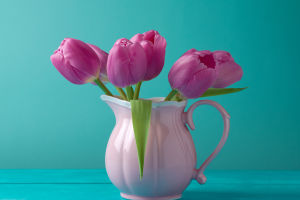Indoor Plant Guide
In modern home living, indoor potted plants not only beautify the space but also improve air quality and create a tranquil atmosphere. Choosing the right potted plants for indoor environments can depend on factors such as light, humidity, and temperature.
Here are five types of potted plants that are particularly suitable for indoor cultivation, each with its characteristics to add vitality and beauty to your home.
1. English Ivy
English Ivy is an excellent choice for indoor planting due to its adaptability to low-light conditions. It thrives well in dimly lit corners or near north-facing windows. With its rich green foliage and various leaf shapes, it brings a natural touch to any space.
English Ivy also helps purify the air by absorbing harmful substances like formaldehyde and benzene. It is easy to care for, requiring only regular watering to keep the soil moist and avoiding waterlogging. Regular pruning can maintain its attractive shape and encourage vigorous growth. Additionally, English Ivy can be hung in baskets to create a cascading green effect, adding a lively touch to indoor spaces.
2. Begonia
Begonias are popular indoor plants known for their large, glossy leaves and colorful flowers. They do well in bright, indirect light, making them ideal for placement near windows while avoiding direct sunlight.
They prefer a warm and humid environment, thriving in temperatures between 18-24°C (64-75°F). Care involves watering to keep the soil slightly moist and avoiding overwatering, which can cause root rot. Monthly application of diluted liquid fertilizer can promote growth and flowering. For those who enjoy flowering plants, Begonias are a great choice, as their blooms can last a long time, adding vibrant color to the interior.
3. Aloe Vera
Aloe Vera is a popular succulent plant known for its unique appearance and multiple benefits. It is highly adaptable and can grow well in low light conditions but thrives with more light. The gel-filled leaves have soothing properties for skin care.
Aloe Vera is easy to maintain, needing infrequent watering—only when the soil is dry. Overwatering can lead to root rot. During the summer, moderate fertilization can support healthy growth. Aloe Vera also purifies the air, absorbing harmful substances like formaldehyde and benzene, and releases oxygen at night, providing fresh air to the indoor environment.
4. Maidenhair Fern
Maidenhair Fern is a graceful indoor plant admired for its delicate foliage and unique growth habit. It thrives in cool, humid environments, making it perfect for dimly lit corners of the home. It prefers high humidity, so using a humidifier or regularly misting the plant can help maintain moisture.
Care involves keeping the soil consistently moist but avoiding waterlogging. Monthly application of diluted fertilizer can encourage healthy growth. Since Maidenhair Fern enjoys a moist environment, it’s important to maintain humidity levels during winter to prevent the plant from drying out. Its elegant appearance and lush green leaves add a refreshing natural touch to indoor spaces.
5. Pothos
Pothos is a highly popular indoor plant known for its adaptability and ease of care. It grows well in low light conditions but performs better in bright, indirect light. Its heart-shaped leaves are vibrant green, providing high ornamental value.
Pothos is easy to care for, requiring only weekly watering to keep the soil moist while avoiding waterlogging. It also has excellent air-purifying abilities, effectively removing harmful substances like formaldehyde and benzene from the air. Regular pruning of its long vines can maintain a compact shape and encourage new growth.
These indoor potted plants each have their unique advantages and characteristics. When selecting the right indoor plant, consider your living environment and personal preferences. These green companions are well worth having, whether for enhancing air quality or adding aesthetic appeal to your home.


